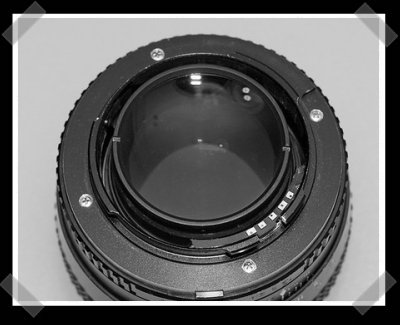
We usually get Canon mods, but [polossatik] sent in some interesting Sony/Minolta lens modding work by [Shaocaholica], who’s been really been taking lens modding to a new level of quality. He picked up several old Rokkor F1.2 lenses and swapped parts around to make four decent lenses. Then he had [Pete Ganz] turn down some new mounts on his lathe. Finally, a quick round of epoxy to add a lens id chip activates the on board image stablization and focus confirmation. Be sure to check out the photo build log here.
11 thoughts on “Custom Mounting Manual Minolta/Sony Lenses”
Leave a Reply to zeddyCancel reply
Please be kind and respectful to help make the comments section excellent. (Comment Policy)















Holy crap, _optics hacks_!
Super sweet!
god those are some phenomenal photos.
as a lighting designer (and therefore in need of the ability to beautifully capture my work), I am tremendously envious of people who can take pictures like that. (Even the ones documenting the hack, much less the neat shit he did with the lenses)
In terms of optics, i strongly believe you get what you pay for.
Generally you’re not going to get good quality unless your drop the big bucks, just take a look at Canons L series of lenses. Take a look at the sidelines of any sporting event and you’ll see tons of white lenses (L lenses) – professional grade lenses!
@3
utility/cost will not be constant. It is true that an item’s price (especially with respected brands) is a good indicator of that item’s performance, but often the best value will not come from the most expensive item.
suppose ‘a’ is twice as good as ‘b’, but costs ten times as much as ‘b’ does. if you photograph for sports illustrated (for example), ‘a’ might be worth that extra cost. for many applications though, ‘b’ will be the better bargain.
and your statement that “Generally you’re not going to get good quality unless your drop the big bucks” is inaccurate. many a cheap camera will give you “good” quality. Professionals spend the extra money because they need “really fucking good” quality (for large prints, etc.).
I think canon made a 50mm f/1.0 lens recently that cost around $1000. A 40 year old, manual focus f/1.4 lens might cost $20….
I’m tired of writing this, i feel like i’m explaining something to a child.
@3,
I’m not that into digital photograpy, but back in my school days (70s & 80s) when we used film, Rokkor lenses (from minolta)were among the finest Japan had to offer, in terms of coatings, spherical abberation (lack of) and uniformity. they were not cheap then, and adjusted for inflation, they would be even more costly now.
so (you get what you pay for) works in your favor in this case
@4
LOL, well said
Of course everybody knows that it only works really good is it says CANON IS USM L on the side. But hey those IS USM L lenses are coming down in price, I think I might go spend an entire months pay just so I can have one in a prime focus.
I only wish I knew enough about optics to do this, as it would make me happy to have somthing faster than a 1.8 50mm
The main point is still that lens quality has no relation to the quality of the picture. It may help, but it’s not because you can afford a Porsche you can actually drive one ;)
@5: well there are (for example) current standard AF f1.4 50mm lenses in the A-mount (Sony/Minolta) family and also for Pentax. I don’t know very well other mounts, but i’m sure there are for Canon, Nikon, etc
I’ve also made a modification of the same lens earlier, and posted a guide for anyone to modify this or another similar old lens to the mount of their choice (doesn’t need to be Minolta AF) starting from the photo at: http://www.flickr.com/photos/arkku/1266938702/
The advantage of my modding method is that it doesn’t require any expensive parts; a non-electric conversion costs about $5-10 plus the lens, adding electronics obviously depends on obtaining a proper microchip for the camera (but for Sony DSLRs it’s about $40 extra). The mod is also very easy to do, took me about 45 minutes initially, most of the time after that (can be hours) is spent adjusting the infinity focus position to desired accuracy (personally I wanted it good enough for astrophotography, which took more effort than most people need).
As for the lens itself, the 58mm f/1.2 is a superb lens, perhaps the best bokeh of any I’ve seen. Not the sharpest, though, but for just sharpness there are so many others. Anyone commenting above about the advantages of “expensive glass” is missing the point entirely (plus that lens WAS expensive glass when new).
shut up joelanders, take your shitty minolta manual focus lense and forcibly insert it into your anus.
@8
i think i’ve made my point if that is the best counterargument you can provide. your knowledge of “optics” clearly doesn’t extend beyond the price and the color of the lens. forgive us all if we don’t take your opinion seriously.
I did similar work while back. It happens to be a Canon mod, but it has a more polished end result than the other Canon mods posted so far with the same goal.
http://ganymeta.org/~darren/photo_f1.2_conversion.php